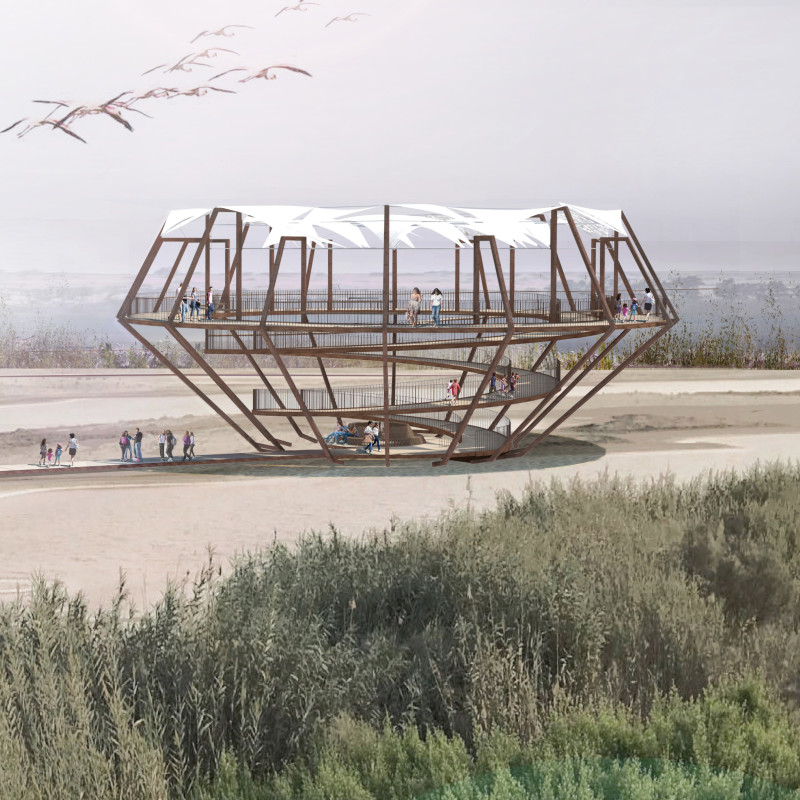5 key facts about this project
The Abu Dhabi Flamingo Observation Tower is an architectural project situated in the Al Wathba Wetland Reserve, approximately 20 kilometers east of Abu Dhabi. It is designed to function both as a visitor lookout and an educational hub focused on the unique ecosystem of the region. The structure provides panoramic views of the wetlands, particularly catering to the observation of flamingos and other wildlife. Through its integration with the natural landscape, the tower seeks to enhance visitor engagement while prioritizing ecological sensitivity.
Unique Design Approaches
The design of the Flamingo Observation Tower incorporates several innovative elements that distinguish it from typical observation structures. The approach revolves around a spiraling ramp that enables accessibility for all visitors, allowing a gradual ascent that encourages interaction with the surrounding environment. The curvature of the design not only optimizes spatial flow but also serves aesthetic purposes, harmonizing the structure with the organic forms of the wetlands.
An important feature is the flying-canopy made of tensile fabric, which functions as a shade structure while capturing ambient wind energy. This adaptive shading system enhances visitor comfort and reduces energy consumption, aligning with sustainable architectural practices. The use of Corten steel in the structural components contributes to both durability and aesthetic integration with the natural elements, offering a rugged appearance that complements the landscape.
Sustainable Materiality and Engagement
The architectural project employs a careful selection of materials to support its ecological goals. Corten steel, wooden decking, and steel micro piles are utilized to promote structural integrity while minimizing environmental impact. The materials not only serve functional purposes but also add to the visual coherence of the observation tower.
In addition to being an observation point, the project includes a comprehensive boardwalk system that connects various viewing platforms throughout the reserve. This facilitates exploration and education, allowing visitors to engage with different biomes within the wetlands. Structured modules such as The Kite and The Nest provide spaces for rest and information dissemination, encouraging a deeper understanding of the local ecosystem.
For those interested in exploring the architectural plans, sections, and design details further, the project presentation provides comprehensive insights into the architectural ideas and methodologies employed in this unique observation tower.






































